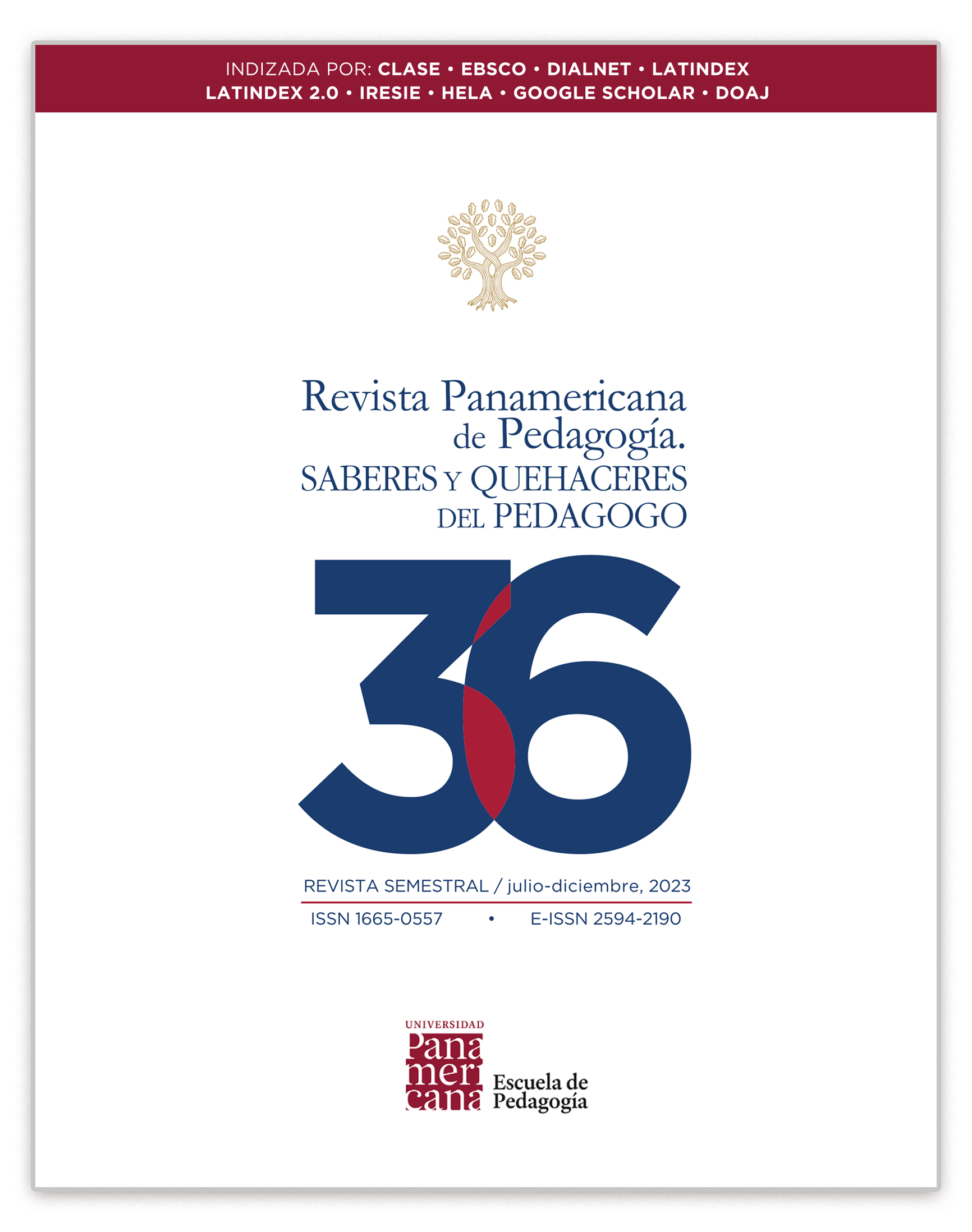Publicado 23-06-2023
Palabras clave
- conducta del profesor,
- evaluación formativa,
- evaluación sumativa,
- fobia a los exámenes,
- examen escrito

Esta obra está bajo una licencia internacional Creative Commons Atribución-NoComercial-CompartirIgual 4.0.
Cómo citar
Resumen
El examen escrito es prácticamente el instrumento de evaluación más utilizado en las aulas; paradójicamente, a pesar de su uso masivo, este instrumento arrastra una serie de prácticas docentes con implicaciones negativas para el estudiantado. El objetivo de este artículo es proponer un conjunto de prácticas que mejoren la aplicación de los exámenes de aula. Para alcanzar este objetivo, se exponen varias prácticas que atentan contra la validez y el enfoque de evaluación para el aprendizaje. Luego, se proponen nuevas prácticas enfocadas en la evaluación del aprendizaje, como la reducción de la incertidumbre, la creación de atmósferas de confianza, el potencializar el carácter educativo de los exámenes y externalizar ideas positivas sobre la evaluación. La modificación de prácticas propuestas en el trabajo podría incidir en una evaluación más favorable para el estudiantado.
Referencias
- AERA, APA, & NCME. (2014). Standards for educational and psychological testing.
- Araujo, N. V. (2017). Creencias sobre las pruebas utilizadas para evaluar el aprendizaje del inglés. Revista Historia de la Educación Colombiana, 20(20), 91-110. http://dx.doi.org/10.22267/rhec.172020.4
- Blair, A. (2014). Can dialogue help to improve feedback on examinations? Studies in Higher Education, 39(6). https://doi.org/10.1080/03075079.2013.777404
- Bruveris, B. B. (2010). Aspectos amenazantes y facilitadores del desempeño en exámenes escritos y orales para estudiantes con elevada y baja ansiedad ante los Exámenes-Rasgo [Tesis para optar por el grado de Licenciatura en Psicología]. Universidad de Córdoba.
- Cano-García, M. E. (2008). La evaluación por competencias en la educación superior. Profesorado. Revista de Currículum y Formación de Profesorado, 12(3), 1-16.
- Carver, C. S., Scheier, M. F., & Weintraub, J. K. (1989). Assessing coping strategies: A theoretically based approach. Journal of Personality and Social Psychology, 56(2), 267-283.
- Dwyer, C., Gallagher, A., Levin, J., & Morley, M. E. (2003). What is Quantitative Reasoning? Defining the Construct for Assessment Purposes (RR-03-30; Research Reports). Educational Testing Service.
- Eysenck, M., Derakshan, N., Santos, R., & Calvo, M. G. (2007). Anxiety and Cognitive Performance: Attentional Control Theory. Emotion, 7(2), 336-353. https://doi.org/10.1037/1528-3542.7.2.336
- Förster, C. (2018). Instrumentos para la evaluación de los aprendizajes. En C. Förster (Ed) El poder de la evaluación en el aula (pp. 177-230). Ediciones UC.
- Förster, C. E., y Rojas-Barahona, C. (2008). Evaluación al interior del aula: Una mirada desde la validez, confiabilidad y objetividad. Pensamiento Educativo, 43, 288-305.
- Franco, M., Nassi, M., y Nieto, M. (2018). Las tablas de especificaciones en la evaluación de aprendizajes. Revista Enseñanza de Química, 2, 30-47.
- Furlan, L. (2006). Ansiedad ante los exámenes. ¿Qué se evalúa y cómo? Evaluar, 6, 32-51.
- He, Q., Valcke, M., & Aelterman, A. (2011). Pre-service teachers‘ beliefs about evaluation. Social and Behavioral Sciences, 29, 1296-1304. https://doi.org/10.1016/j.sbspro.2011.11.366
- Lowe, P. A. (2020). The Test Anxiety Measure for College Students-Short Form: Development and Examination of Its Psychometric Properties. Journal of Psychoeducational Assessment, 39(2), 139-152. https://doi.org/10.1177/0734282920962947
- Ministerio de Educación Pública (2020). Lineamientos técnicos para la elaboración de la prueba escrita en el marco de la transformación curricular. https://cajadeherramientas.mep.go.cr/faro_referencias/4_ref_apoyos_eval/componentes/pruebas/lineamientos_prueba_escrita.pdf
- Moreno, T. (2016). Evaluación del aprendizaje y para el aprendizaje. Universidad AutoónomaMetropolitana.
- Pekrun, R. (2006). The Control-Value Theory of Achievement Emotions: Assumptions, Corollaries, and Implications for Educational Research and Practice. Educational Psychology Review, 18, 315-341. https://doi.org/10.1007/s10648-006-9029-9
- Prieto, M. (2008). Creencias de los profesores sobre Evaluación y Efectos Incidentales.Revista de Pedagogía, 29(84), 123-144.
- Ramírez, G., & Beilock, S. L. (2011). Writing About Testing Worries Boosts Exam Performance in the Classroom. Science, 331(6014), 211-213. https://doi.org/10.1126/science.1199427
- Rivas, R. E. (2008). Evaluando o midiendo. Educere, 12(40), 19-22. http://ve.scielo.org/pdf/edu/v12n40/art03.pdf
- Rojas, L. (2021). Mecanismos subyacentes a la asociación de la ansiedad ante los exámenes con el rendimiento en pruebas [Tesis para optar por el grado de Doctorado en Educación]. Universidad de Costa Rica.
- Rojas-Torres, L., y Ordóñez, G. (2019). Proceso de construcción de pruebas educativas: el caso de la Prueba de Habilidades Cuantitativas. Evaluar, 19(2), 15-29. https://doi.org/10.35670/1667-4545.v19.n2.25080
- Salend, S. J. (2011). Addressing test anxiety. Teaching exceptional children, 44(2), 55-68. https://doi.org/10.1177/0040059911044002
- Salend, S. J. (2012). Teaching students not to sweat the test. PDK International, 93(6), 20-25.https://doi.org/10.1177/003172171209300605
- Schoenfeld, A. H. (2002). Making Mathematics Work for All Children: Issues of Standards, Testing, and Equity. Educational Researcher, 31(1), 13-25.
- Stiggins, R. (2004). New Assessment Beliefs for a New School Mission. PDK International, 86(1), 22-27. https://doi.org/10.1177/003172170408600106
- Von der Embse, N., Jester, D., Roy, D., & Post, J. (2018). Test anxiety effects, predictors, and correlates: A 30-year meta-analytic review. Journal of Affective Disorders, 227,483-493. https://doi.org/10.1016/j.jad.2017.11.048
- Zepeda, S. (2017a). El fin justifica los medios: Intencionalidades de la evaluación. En C. E.Förster (Ed.) El poder de la evaluación en el aula. Ediciones UC.
- Zepeda, S. (2017b). La retroalimentación efectiva y su potencial para mejorar el aprendizaje. En C. E. Förster (Ed.). El poder de la evaluación en el aula. Ediciones UC.






